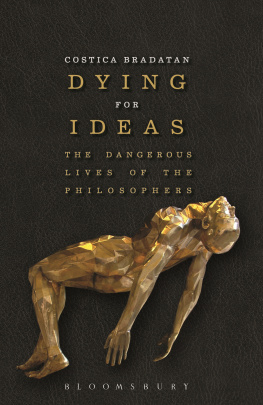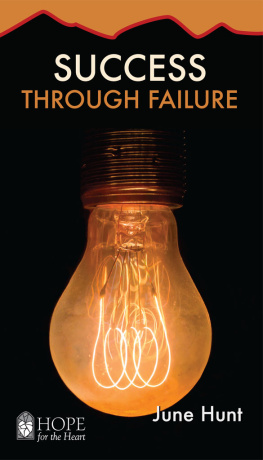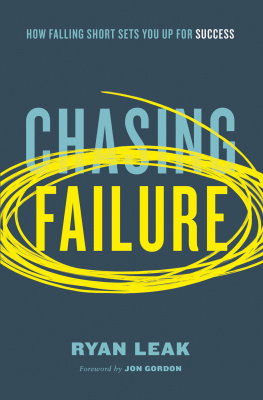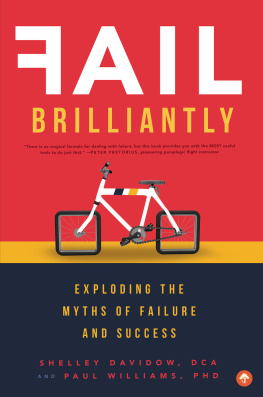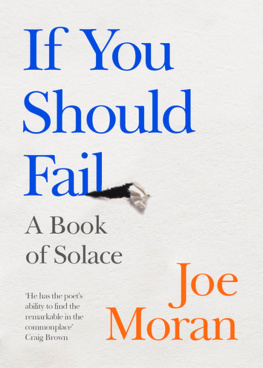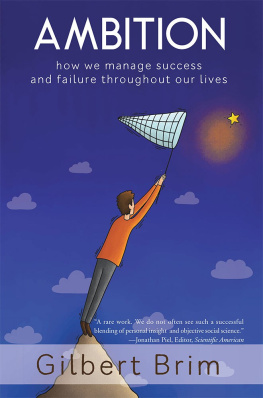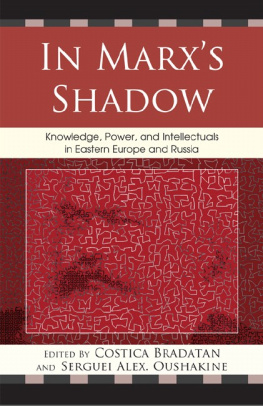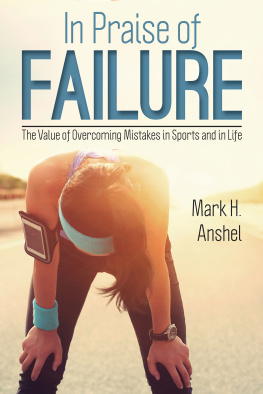Contents
Guide
Pagebreaks of the print version
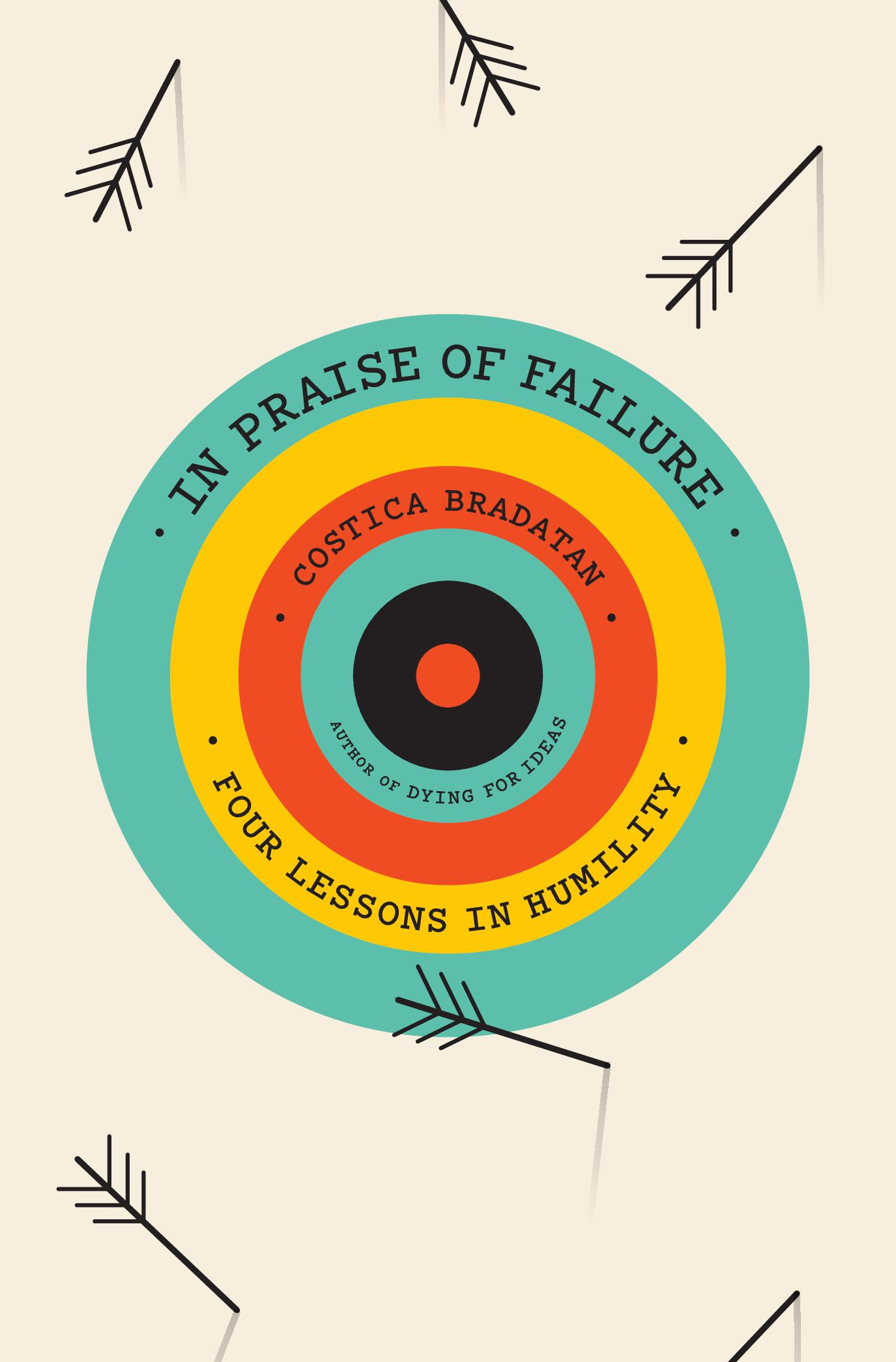
IN PRAISE OF FAILURE

Four Lessons in Humility
COSTICA BRADATAN
HARVARD UNIVERSITY PRESS
Cambridge, Massachusetts
London, England
2023
Copyright 2023 by the President and Fellows of Harvard College
All rights reserved
Jacket design by Oliver Munday
978-0-674-97047-2 (cloth)
978-0-674-28736-5 (EPUB)
978-0-674-28735-8 (PDF)
The Library of Congress has cataloged the printed edition as follows:
Names: Brdan, Costic, author.
Title: In praise of failure : four lessons in humility / Costica Bradatan.
Description: Cambridge, Massachusetts : Harvard University Press, 2023. | Includes bibliographical references and index.
Identifiers: LCCN 2022010828
Subjects: LCSH: Weil, Simone, 19091943. | Seneca, Lucius Annaeus, approximately 4 B.C.65 A.D. | Gandhi, Mahatma, 18691948. | Cioran, E. M. (Emile M.), 19111995. | Mishima, Yukio, 19251970. | Failure (Psychology) | Humility.
Classification: LCC BF575.F14 B73 2023 | DDC 158.1dc23/eng/20220616
LC record available at https://lccn.loc.gov/2022010828
Cristinei i Anastasiei
Contents
Picture yourself on a plane, at high altitude. One of the engines has just caught fire, the other doesnt look very promising, and the pilot has to make an emergency landing. Finding yourself in such a situation is no doubt shattering, but also illuminating. At first, amid the wailing and gnashing of teeth, you cannot think in any detached, rational fashion. You have to admit it, you are paralyzed by fear and scared to death, just like everyone else. Eventually, the plane lands safely, and everybody gets off unharmed. Once youve had a chance to pull yourself together, you can think a bit more clearly about what just happened. And you start learning from it.
You learn, for instance, that human existence is something that happens, briefly, between two instantiations of nothingness. Nothing firstdense, impenetrable nothingness. Then a flickering. Then nothing again, endlessly. A brief crack of light between two eternities of darkness, as Vladimir Nabokov would have it. These are the brutal facts of the human conditionthe rest is embellishment. No matter how we choose to reframe or retell the facts, when we consider what precedes us and what follows us, we are not much to talk about. We are next to nothing, in fact. And much of what we do in life, whether we know it or not, is an effort to address the sickness that comes from the realization of this next-to-nothingness. Myths, religion, spirituality, philosophy, science, works of art and literaturethey seek to make this unbearable fact a little more bearable.
One way to get around this is to deny the predicament altogether. Its the optimistic, closed-eye way. Our condition, this line goes, is not that precarious after all. In some mythical narratives, we live elsewhere before we are born here, and we will reincarnate again after we die. Some religions go one step further and promise us life eternal. Its good business, apparently, as takers have never been in short supply. More recently, something called transhumanism has entered this crowded market. The priests of the new cult swear that, with the right gadgets and technical adjustments (and the right bank accounts), human life will be prolonged indefinitely. Other immortality projects are likely to do just as well, for our mortality problem is unlikely to be resolved.
No matter how many of us buy into religions promise of life eternal, however, there will always be some who remain unpersuaded. As for the transhumanists, they may know the future, but they seem largely ignorant of the past: human enhancement products have, under different labels, been on the market at least since the passing of Enkidu of Gilgamesh fame. Compared with what the medieval alchemists had to offer, the transhumanists wares seem rather bland. Yet thousands of years of life prolongation efforts havent put death out of business. We may live longer lives today, but we still die eventually.
Another way to deal with our next-to-nothingness is to confront it head-on, the bullfighting way: no escape routes, no safety nets, no sugarcoating. You just plow ahead, eyes wide open, always aware of whats there: nothing. Remember the naked facts of our condition: nothing ahead and nothing behind. If you happen to obsess over your next-to-nothingness and cannot buy into the life eternal promised by religion or afford a biotechnologically prolonged life, this may be right for you. Certainly, the bullfighting way is neither easy nor gentleparticularly for the bull. For thats what we are, after all: the bull, waiting to be done in, not the bullfighter, who does the crushing and then goes on his way.
Human beings are so made, writes Simone Weil, that the ones who do the crushing feel nothing; it is the person crushed who feels what is happening. Pessimistic as this may sound, there is hardly a higher form of human knowledge than the one that allows us to understand what is happeningto see things as they are, as opposed to how we would like them to be. Besides, an uncompromising pessimism is superbly feasible. Given the first commandment of the pessimist (Whenever in doubt, assume the worst!), you will never be taken by surprise. Whatever happens on the way, however bad, will not put you off balance. For this reason, those who approach their next-to-nothingness with open eyes manage to live lives of composure and equanimity, and rarely complain. The worst thing that could befall them is exactly what they have expected.
Above all, the eyes-wide-open approach allows us to extricate ourselves, with some dignity, from the entanglement that is human existence. Life is a chronic, addictive sickness, and we are in bad need of a cure.
The failure-based therapy that I offer in this book may seem surprising. After so much worshipping of success, failures reputation is in tatters. There seems to be nothing worse in our world than to failillness, misfortune, even congenital stupidity are nothing by comparison. But failure deserves better. There is, in fact, much to praise about it.
Failing is essential to what we are as human beings. How we relate to failure defines us, while success is auxiliary and fleeting and does not reveal much. We can live without success, but we would live for nothing if we didnt come to terms with our imperfection, precariousness, and mortality, which are all epiphanies of failure.
When it occurs, failure puts a distance between us and the world, and between ourselves and others. That distance gives us the distinct feeling that we dont fit in, that we are out of sync with the world and others, and that there is something amiss. All of this makes us seriously question our place under the sun. And that may be the best thing to happen to us: this existential awakening is exactly what we need if we are to realize who we are. No healing will come unless preceded by it.
Should you experience failure and be visited by such feelings of inadequacy and out-of-placeness, dont resist themfollow them. They will tell you that you are on the right track. We may be in this world, but we are not of this world. This understanding is the beginning of awakening, and it places failure, humble though it may be, at the heart of an important spiritual quest.
Can failure, then, save my life? you might ask. Yes, it can. Provided that you use it well. How failure can be put to good use is the story this book seeks to tell. As you will find out in due course, far from being the unmitigated disaster its maligners make it out to be, failure can work wonders of self-realization, healing, and enlightenment. It will not be easy, though, for failing is a complicated affair.


